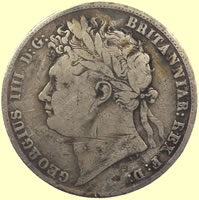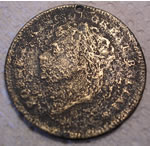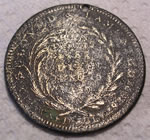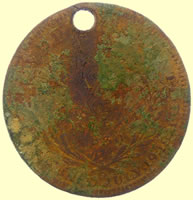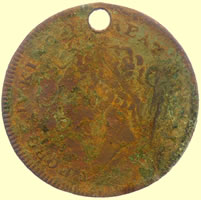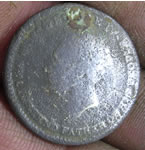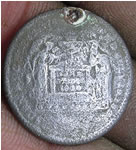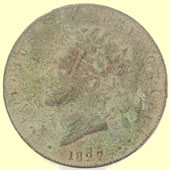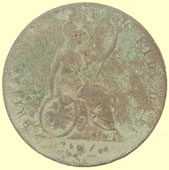
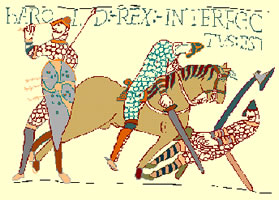
Metal detecting holidays in England with the World's most successful metal detecting club.20 years plus.
Twinned with Midwest Historical Research Society USA.
George IV 1820 - 1830
|
George was born on 17 August 1762, the eldest son of George III and Queen Charlotte. The Hanoverian kings were notorious for having bad relations with their heirs, and George III and his son were no exception. George's extravagant lifestyle caused his father to regard him with contempt. In 1785, George secretly and illegally married a Roman Catholic, Maria Fitzherbert. In 1795, he was officially married to Princess Caroline of Brunswick, in exchange for parliament paying his debts. The marriage was a disaster and George tried unsuccessfully to divorce her after his accession. In 1811, George became regent after his father was declared insane. He was able to indulge his love for parades and spectacle after the final defeat of Napoleon by Britain and her allies in 1815. George became king in 1820. He visited Hanover in 1821 and his visit to Scotland the following year was the first by a British monarch since 1650. His interest in government was sporadic and he enjoyed varied relations with his ministers. Although he had courted Whig politicians in his youth, this was mainly to annoy his father, and he became increasingly pro-Tory. He intrigued against the Earl of Liverpool, prime minister from 1820 to 1827, but approved of George Canning, who became foreign secretary in 1822 and prime minister in 1827. In 1829 George was forced by his ministers, much against his will, to agree to Catholic Emancipation. Throughout his adult life, George was an important artistic patron, acquiring an impressive collection of art and patronising architects and designers, most notably at Brighton. He first visited the seaside town in 1783, returning frequently and from 1815 developing the Royal Pavilion in an exotic combination of Indian and Chinese styles. In the last years of his life George had little involvement in government and spent his time in seclusion at Windsor Castle. He died on 26 June 1830. His only child, Princess Charlotte had died in childbirth in 1817, so the crown passed to George's brother who became William IV. |
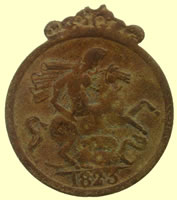
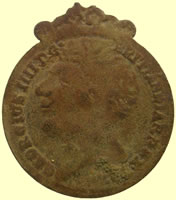
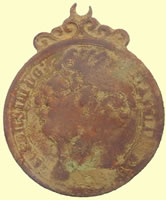



Superb 1823 George IV coronation medallions
Saint George slaying the dragon. A crude imitation of Pistrucci's masterpiece found on British coinage to this day.
Gold full and half sovereigns
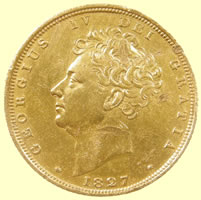  |
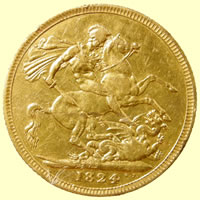 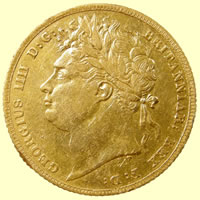 |
| 1827 George IV gold full sovereign | 1824 George IV milled gold full sovereign |
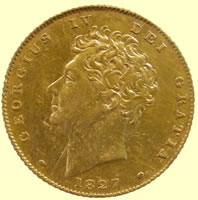 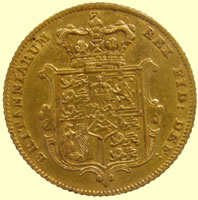 |
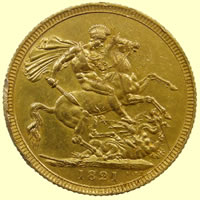 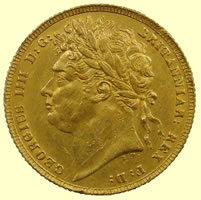 |
| 1827 George IV milled gold half sovereign | 1821 George IV milled gold full sovereign |
 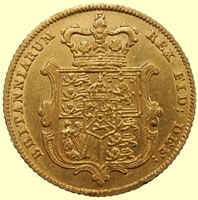 |
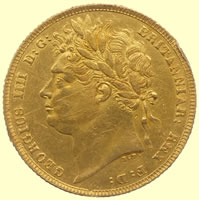 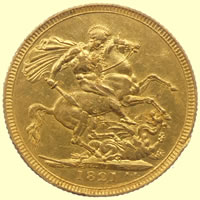 |
1828 George IV milled gold half sovereign 19.1mm,3.98g |
1821 George IV milled gold sovereign 8.01g,22.13mm |
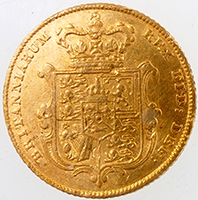 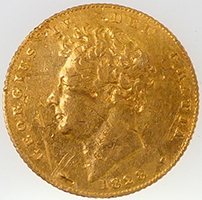 |
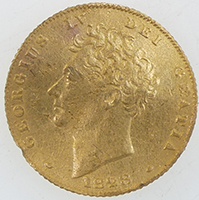  |
1828 George IV milled gold half sovereign 4 g, 19.36g |
1828 George IV milled gold half sovereign 3.96g, 19.31g |
Half Crown (30 pence)
|
|
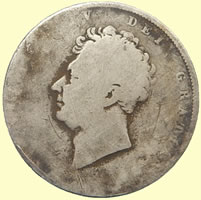 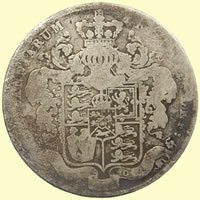 |
|
1820 -30 George IV milled silver half crown (30 pence)
1820 George IV milled silver half crown (30 pence) |
|
Shilling (12 pence)
|
|
  |
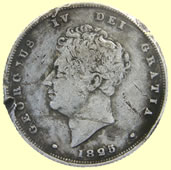 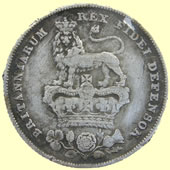 |
| 1824 | 1825 |
 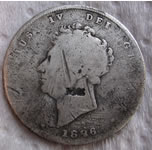 |
  |
| 1826 | 1826 |
  |
  |
| 1826 | 1824 |
  |
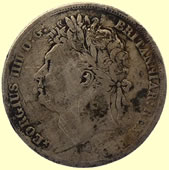  |
| 1825 | 1824 |
  |
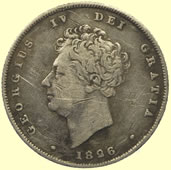 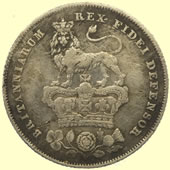 |
| 1826 | 1826 |
  |
  |
| 1825 | 1826 |
  |
  |
| 1826 | 1826 |
|
 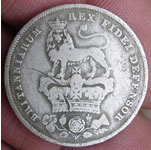 |
| 1826 | 1826 |
 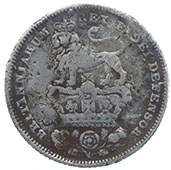 |
  |
| 1826 | 1824 |
  |
  |
| 1826 | 1821 |
  |
  |
| 1826 | 1825 |
  |
|
| 1824 | |
Six pence
|
|
  |
 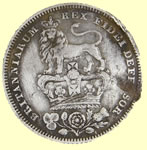 |
| 1821 | 1828 |
  |
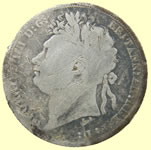  |
| 1825 | 1823 |
  |
  |
| 1828 | 1821 |
  |
 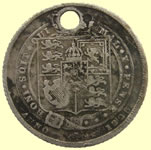 |
| 1825 | 1826 |
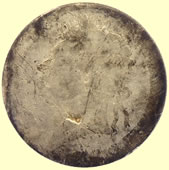 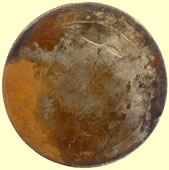 |
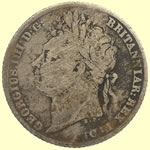 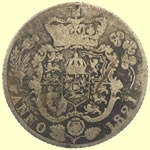 |
| 1820 | 1821 |
  |
  |
| 1821 | 1821 |
  |
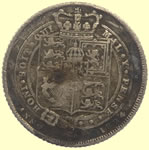 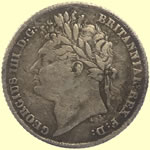 |
| 1824 | 1824 |
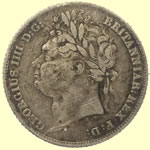 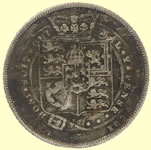 |
  |
| 1825 | 1825 |
  |
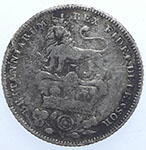 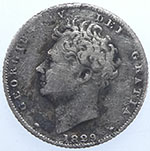 |
| 1824 | 1829 |
  |
  |
| 1826 | 1824 |
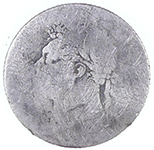  |
|
| 1825 | |
Medallions and tokens
|
|
1830 George IV 'King of Great Britain' medallion Crowned July 19th 1821 Commemorative Memorial Medal for George IV. Love & Lamented Crowned July 1821 - George IV King of Great Britain Born 12 th Aug 1762 Died 26th June 1830
July 9th 1821 George IV copper medallion Coronation of George IV of England
1827 George IV copper half penny
|
|
 |
|
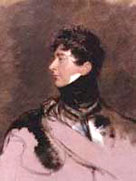 Famous for his dissolute lifestyle and his Royal Pavilion in Brighton, George became prince regent in 1811 and king in 1820.
Famous for his dissolute lifestyle and his Royal Pavilion in Brighton, George became prince regent in 1811 and king in 1820. 
